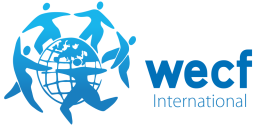COP27 Cheat Sheet – your guide for relevant COP terms
Did you ever wonder what the COP is and what all those complicated terms in relation to the climate crisis mean? Then we have got you covered!
At WECF International, we want people to engage with the upcoming COP27 as much as possible, therefore we created a Cheat Sheet with information regarding the Conference and useful terms to know to follow the discussions around COP.
COP27 will take place in Sharm El-Sheikh, Egypt, from the 6th to the 18th of November. Civil society organizations, State leaders, activists, ministers and diplomats will meet to build on the outcomes of COP26 to take action against the climate crisis. In a nutshell, the COP is the biggest international climate conference, and this year the goals are: mitigation, adaptation, finance and collaboration. It is easy to get lost in understanding what this means already, but don’t panic, we have compiled a list of relevant terms for you to get to know COP!
***
Generation equality forum (GEF) = global gathering for gender equality of diverse stakeholders that took place in 2021, and it led to the making of the Global Acceleration Plan. More money has been invested already in Feminist Action for Climate Justice thanks to GEF, and this is highly important for COP27 as States need to be held accountable to reach climate objectives.
Global Acceleration Plan = this plan was created during GEF due to the increasing need to address gender inequalities and gaps. It consists of “a targeted set of concrete, ambitious and immediate actions within the period of 2021-2026 to deliver tangible impact on gender equality and girls’ and women’s human rights.”
Bejing Declaration and Platform for Action = visionary agenda for gender development adopted in 1995. This agenda sets important international resolutions for gender equality.
Lima Work Plan on Gender (LWPG) = The first LWPG was established in 2014 to “achieve gender responsive climate action and policy”. It was extended and strengthened in 2019. The current enhanced LWPG contains commitments and acknowledgements from governments, UN entities .
Gender Action Plan (GAP) = The GAP is part of the LWPG, and outlines concrete objectives and activities in 5 priority areas to advance knowledge and understanding of gender-responsive climate action, by governments, UN entities, and other stakeholders. Examples include promoting women’s leadership in negotiations, collaborating with women’s groups on climate action. Read more about the GAP here
IPCC = Intergovernmental Panel on Climate Change. The IPCC assesses science related to climate change. The IPCC works on reports that show the latest science on the impacts of the climate crisis.
Paris agreement = An agreement in 2015, legally binding treaty on climate change. Its goal is to limit global warming by 2 degrees Celsius max, preferably even 1.5 degrees.
GST = The Global Stocktake is a process for taking stock of implementation of the Paris Agreement. it should become a strong accountability process, and is being designed now, by 2023.
UNFCCC = the United Nations Framework Convention on Climate Change. It establishes the basic legal framework for international climate cooperation to stabilize the concentration of greenhouse gases in the air.
WGC = Women and Gender Constituency. It is one of the 9 stakeholder groups of the UNFCCC. It makes sure that gender equality and women’s voices and rights are included and addressed in the UNFCCC framework.
Glasgow outcomes = Last year, at COP26, the Glasgow Climate Pact was signed, which is the agreed outcomes of the previous COP. “It is a series of decisions and resolutions that build on the Paris accord”. You can find an overview of everything that was decided upon here.
Gender-responsive: this means that a policy or program promotes inclusive governance while acknowledging and paying explicit attention to power imbalances, including specific actions to try and reduce gender inequality
Just Transition – refers to a just and equitable transition in which past harms are being addressed. The Just Transition is a vision-led process that shifts from an extractive economy to a regenerative economy. –
Gender-disaggregated data – any data on individuals broken down by gender. The impacts of climate change do not affect all individuals in the same way, so it’s important to collect data disaggregated.
Loss & damage (L&D) – this term is used to refer to the climate impacts that are lost because of the climate crisis and cannot be compensated for. Loss refers to e.g. lives, historical ways of living, while damage refers to things that can still be repaired such as crop yields, roads and buildings.
Climate mitigation – Mitigation refers to all the measures that are being taken to mitigate the effects of climate change as much as possible. This means e.g. the reducing of emission of CO2.
Climate adaptation – with adaptation we mean that we adapt life to a changing climate: how can we make life as livable as possible and reduce the harmful effects of climate change?
Global warming – is different from climate change. Global warming refers to the long-term heating of the Earth since the pre-Industrial area, due to human activities (mainly the burning of fossil fuels)
Climate crisis versus climate change – Climate change is the long-term change in weather patterns, that is causing circumstances that humankind can hardly adapt to, the word ‘’crisis’’ refers to the emergency that humankind finds itself in because of the climate change we face.

